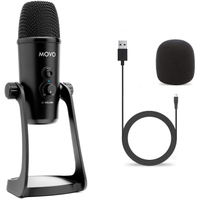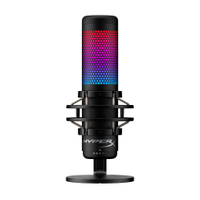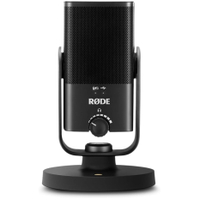The best microphones in 2025: Boost voice quality at home
These are the best microphones to upgrade the sound quality of calls, gaming and audio projects, based on our testing
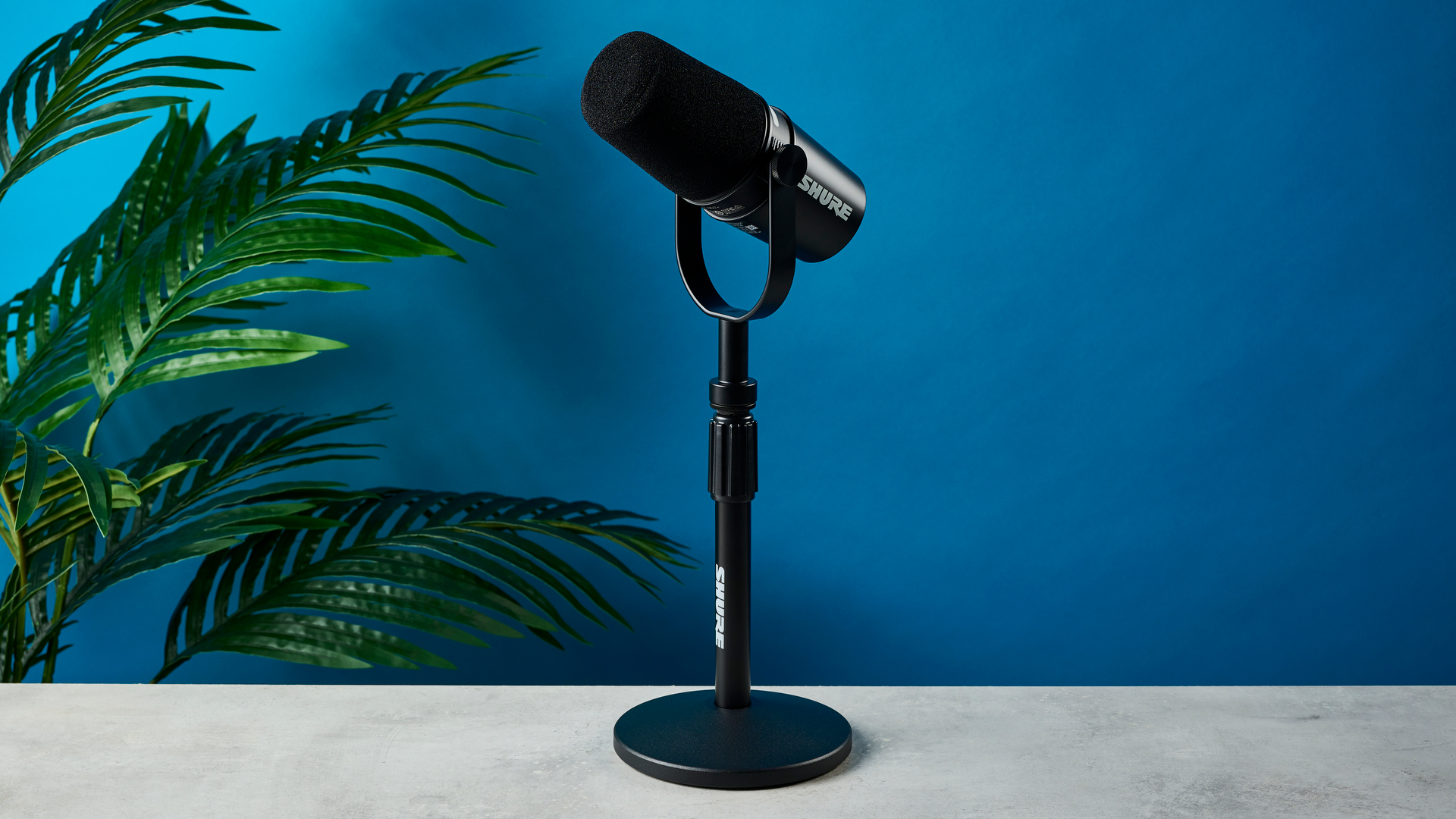
The best microphones help you get clearer voice clarity for recordings, streams, or even work calls. After all, most built-in microphones that you’ll find in your phone, laptop, or even desktop computer tend to be awful, and if you care about how your recordings sound, you want to get something a little more impressive.
The best microphone out there at the moment is Shure MV7i. It features the best audio quality we've ever seen, and there are loads of extra features to get your money's worth. If you’re a beginner though, you might want a slightly different kit, and we’d say the Shure MV6 is a great option that comes with everything you need to get started recording your voice on your computer.
Thanks to my expert testers in the Tom’s Guide reviews team and my own experience recording music (no, you can’t hear it, it’s not very good), I’ve got a clear idea of the kind of microphones you should be looking at. We’ve spent hundreds of hours evaluating the best microphones around, and then ranking them according to their use case.
The Quick List
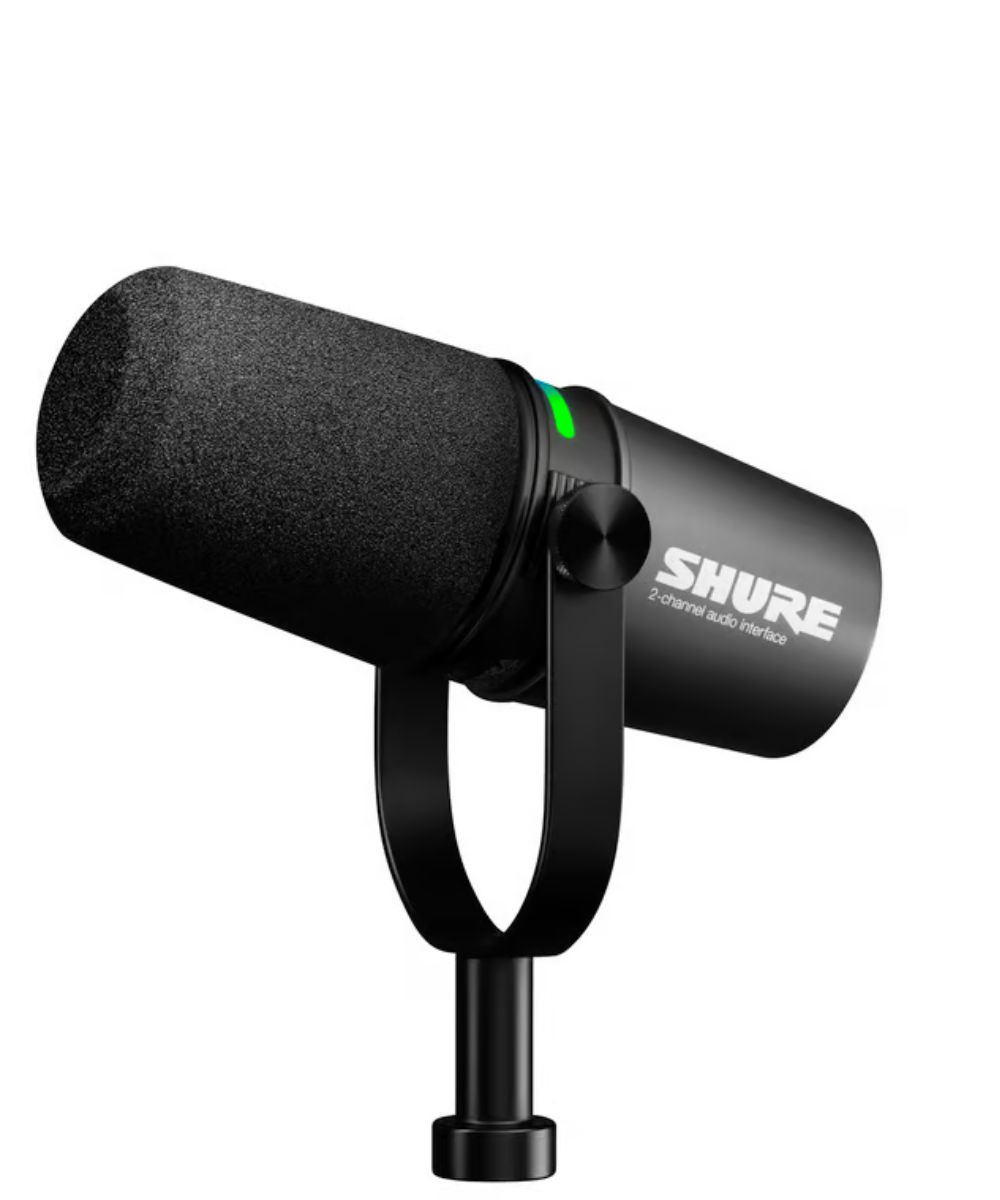
With its built-in audio interface, you won't need to buy anything separate if you want to get an instrument connected. Combine that with top-notch audio quality, and you've the recipe for the best mic overall.
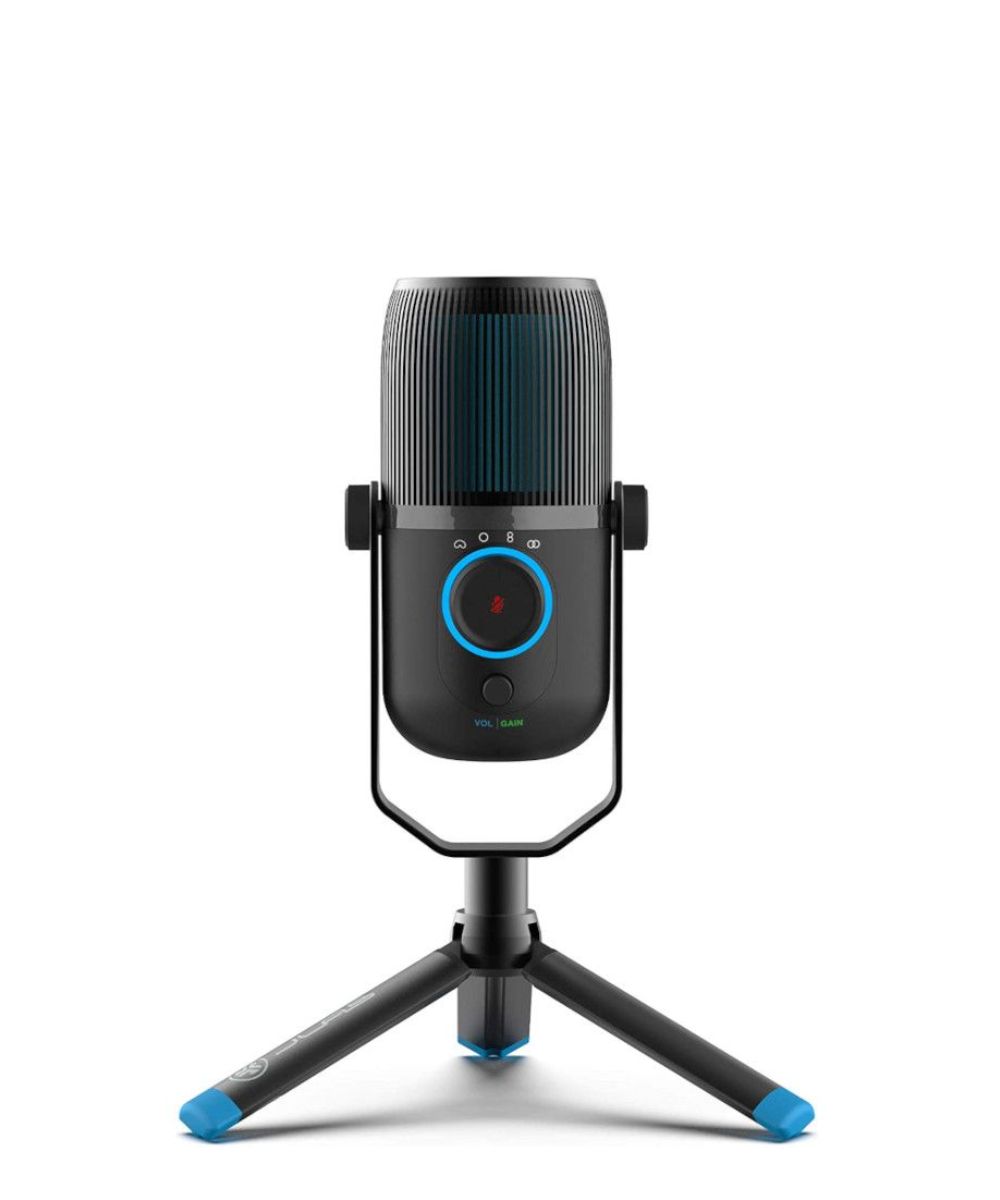
As with the Blue Yeti — the best microphone overall — the JLab Talk is a great value alternative. It picks up speech with warmth and depth, and works well as soon as you plug in the USB cable.
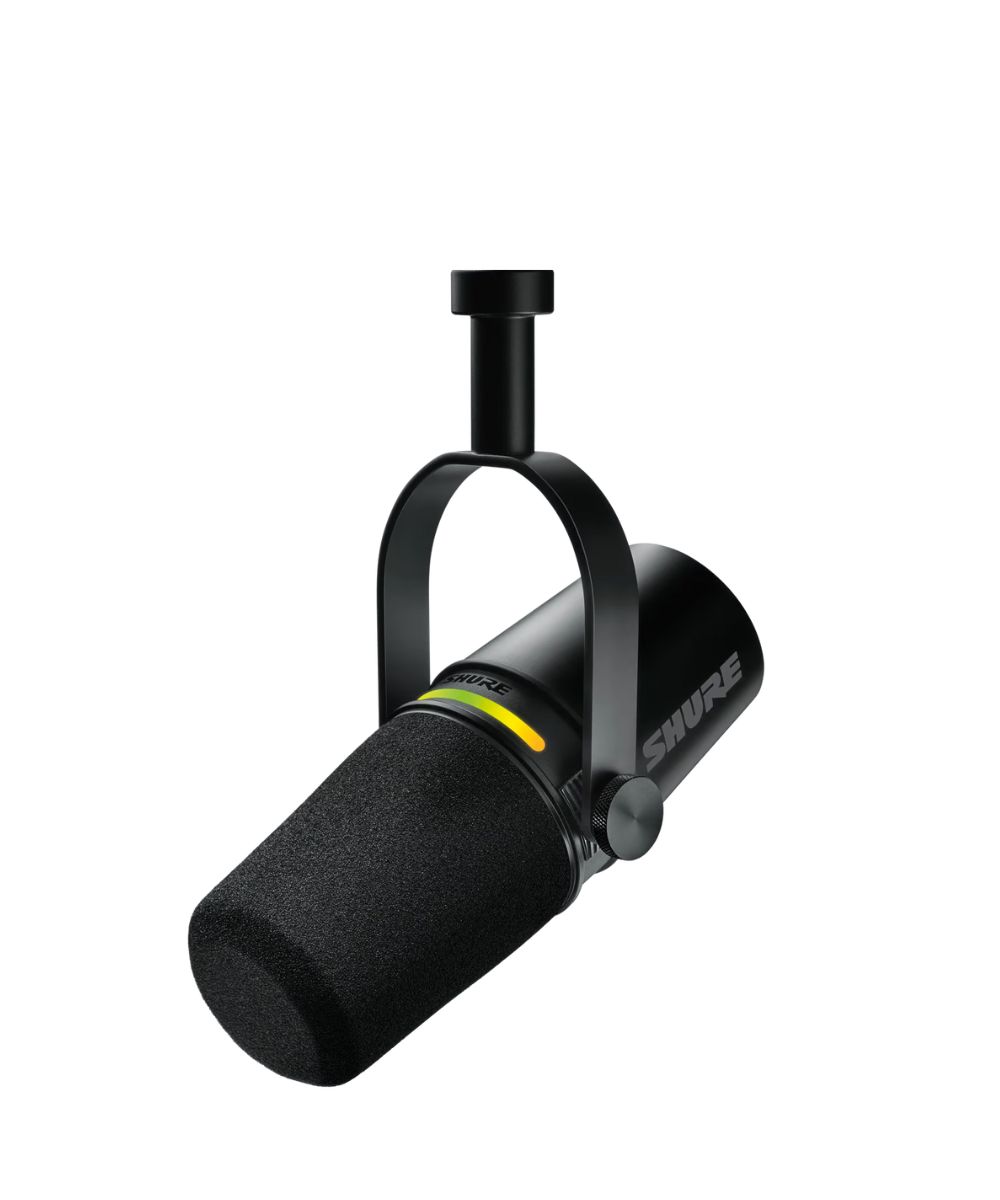
Designed from the ground up for podcasting, the Shure MV7+ isn't the cheapest mic on the list. It is incredibly flexible though thanks to a wide range of different connectors, and it's super user-friendly.
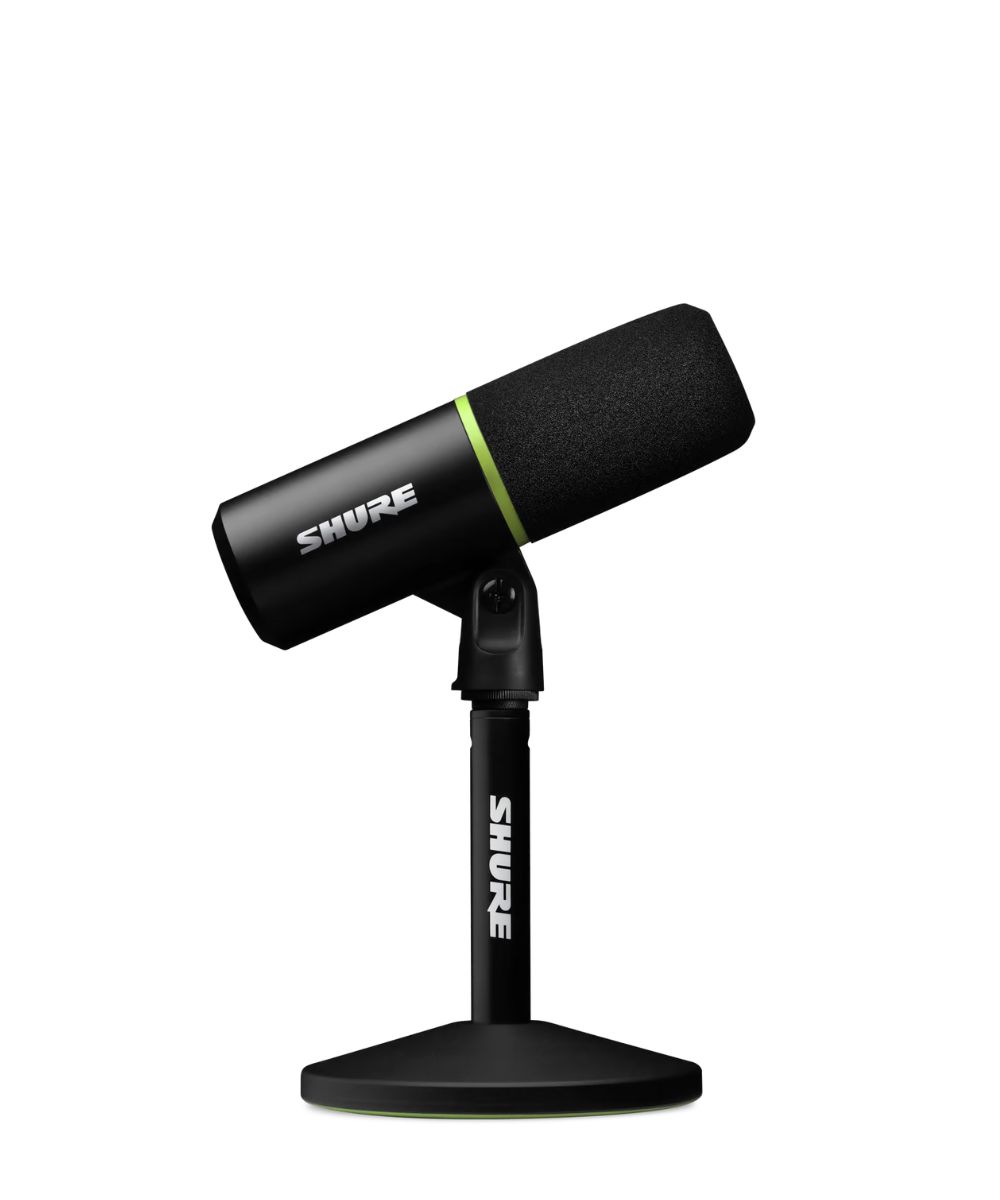
Perfect for beginners thanks to its included stand and incredibly easy setup, the MV6 is a great entry-level option. It also happens to sound really good, and the compatible app is super helpful.
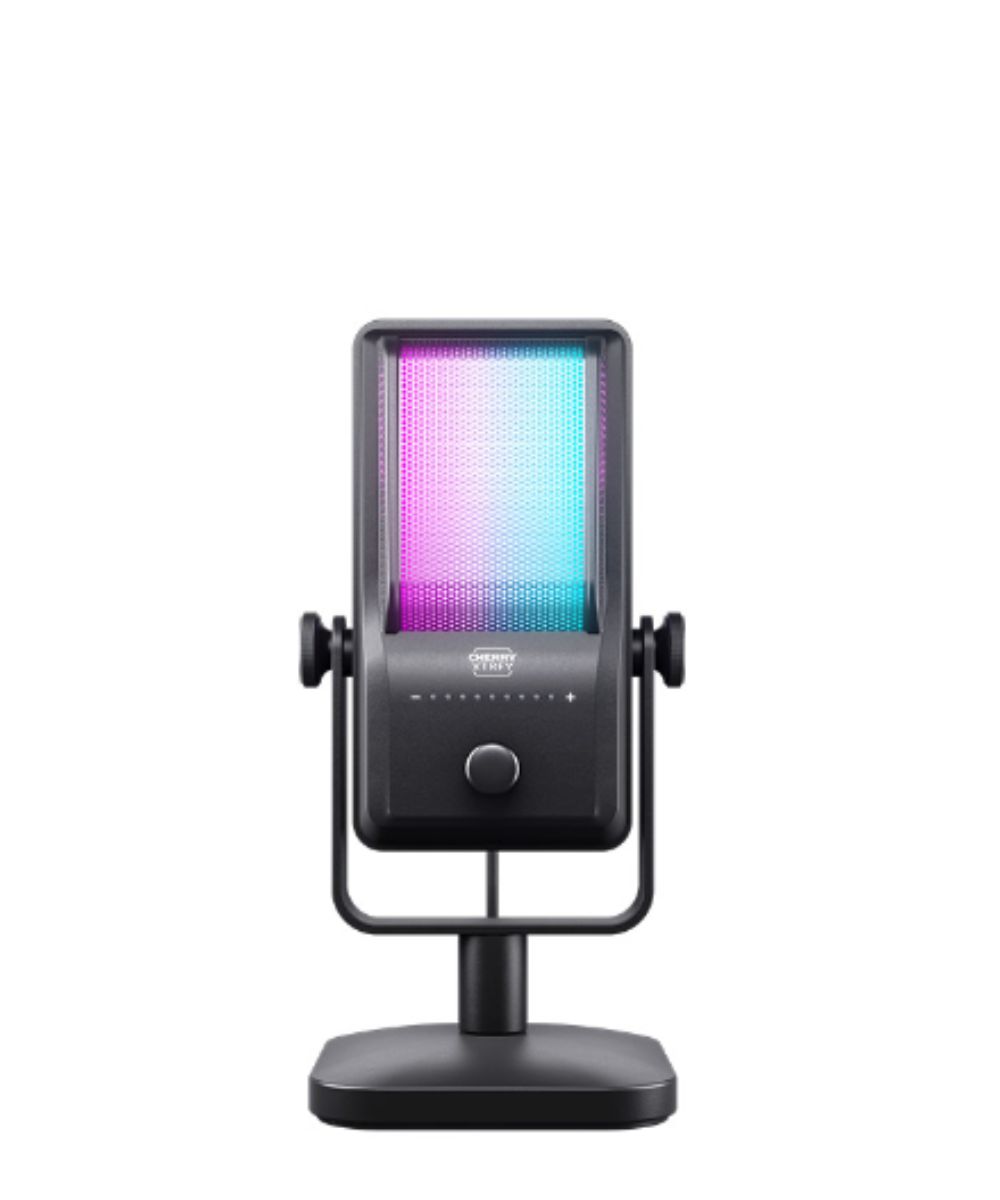
The Cherry Ngale R is a very slick-looking desktop mic. It comes with a stand in the box, and, for the gamers amongst us, it also happens to light up. It's not too expensive either, although you don't get a muff to negate plosives or mouth noises.
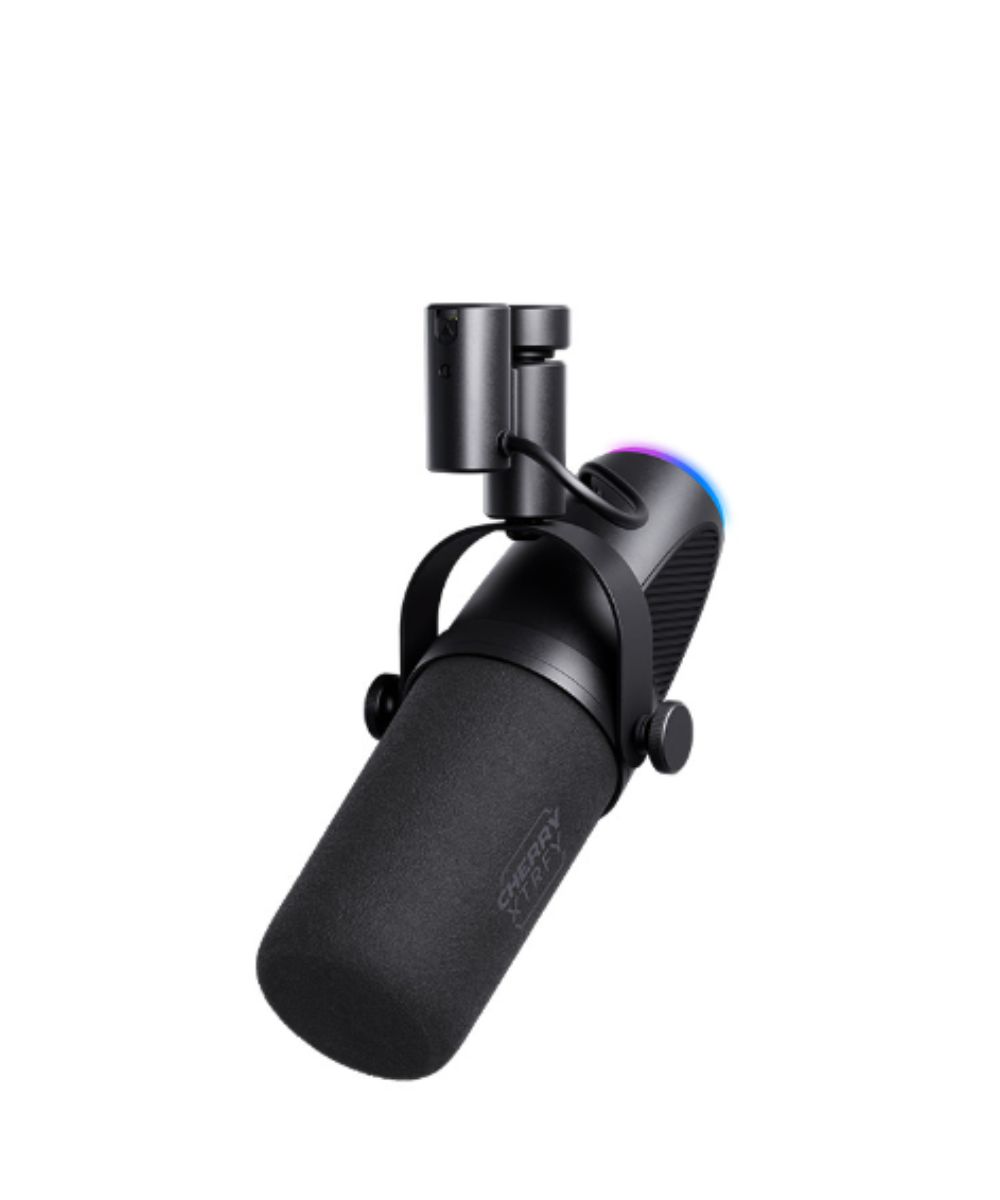
Not a fan of the Shure options? The Ngale X is the perfect alternative, with great sound quality and plenty of connection options. There's also a really helpful desk stand in the box.
The best microphones you can buy right now
Why you can trust Tom's Guide
Most versatile microphone overall
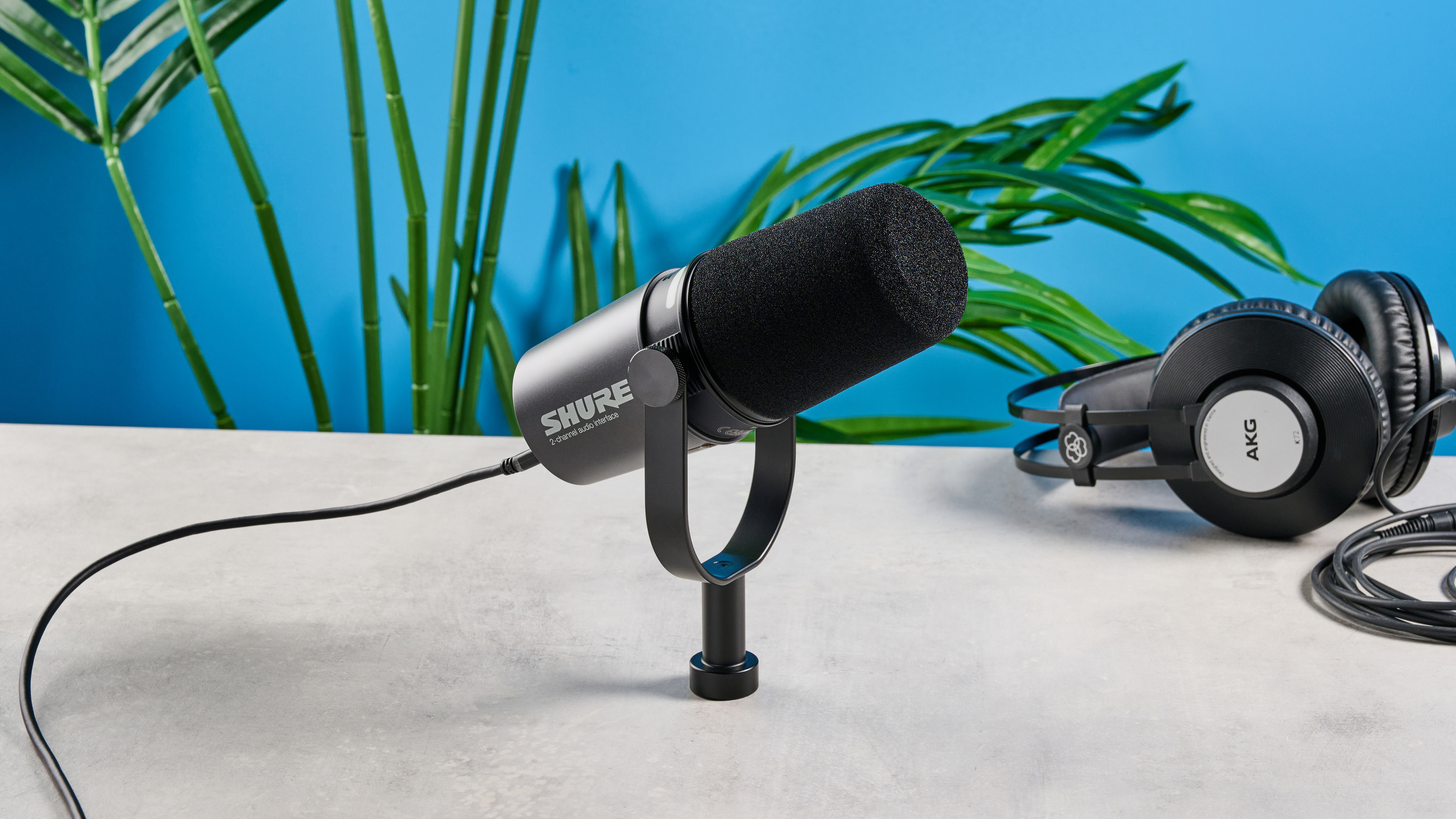

Specifications
Reasons to buy
Reasons to avoid
✅ Top-notch recording. Sounds great for voice as well as other applications.
✅ Easy to use. Just plug it into your computer, and away you go
✅ Built-in interface. You can plug instruments directly into the mic so you don't need a separate interface.
❌ No stand. You'll need a separate stand to mount it on, as there isn't one in the box.
❌ It's not cheap. While not the most expensive option, it's not the cheapest on the list.
The MV7i has it all. Professional recording quality? Check. Innovative helpful features? Check. Intuitive easy-to-use companion software? Check. A built-in virtual audio interface? Che—wait what?
Where normally you’d have to spend a minimum of a hundred bucks on an audio interface on top of your mic, Shure has you covered with the MV7i. This nifty mic has a patented virtual interface built into the microphone itself, so you’re able to plug instruments and XLR devices (like a secondary mic) into the MV7i and record from there. Our best mic for podcasting is the Shure MV7+ — the MV7i is exactly the same as the MV7+, but with added XLR and instrument capabilities.
If you’re a musician, you can plug your instrument into the MV7i using the XLR input or the ¼” TRS input. The instrument will record directly through the MV7i using your desired software — in testing, we used Shure’s own application, Motiv Mix. And if you’re a podcaster or content creator, you can plug an analog XLR mic into the MV7i and instantly digitalize it, meaning you won’t need to buy an XLR converter or an audio interface.
Not only does this compatibility make for easier recording and editing, the vast range of features stuffed into Motiv Mix (Shure’s companion software) makes this mic almost unbeatable. The proprietary Denoiser, Digital Popper Stopper, and SmartGate technology mean you’ll be spending far less time in post-production and more time doing what you love: making noise.
- Read the full Shure MV7i review
Best value microphone
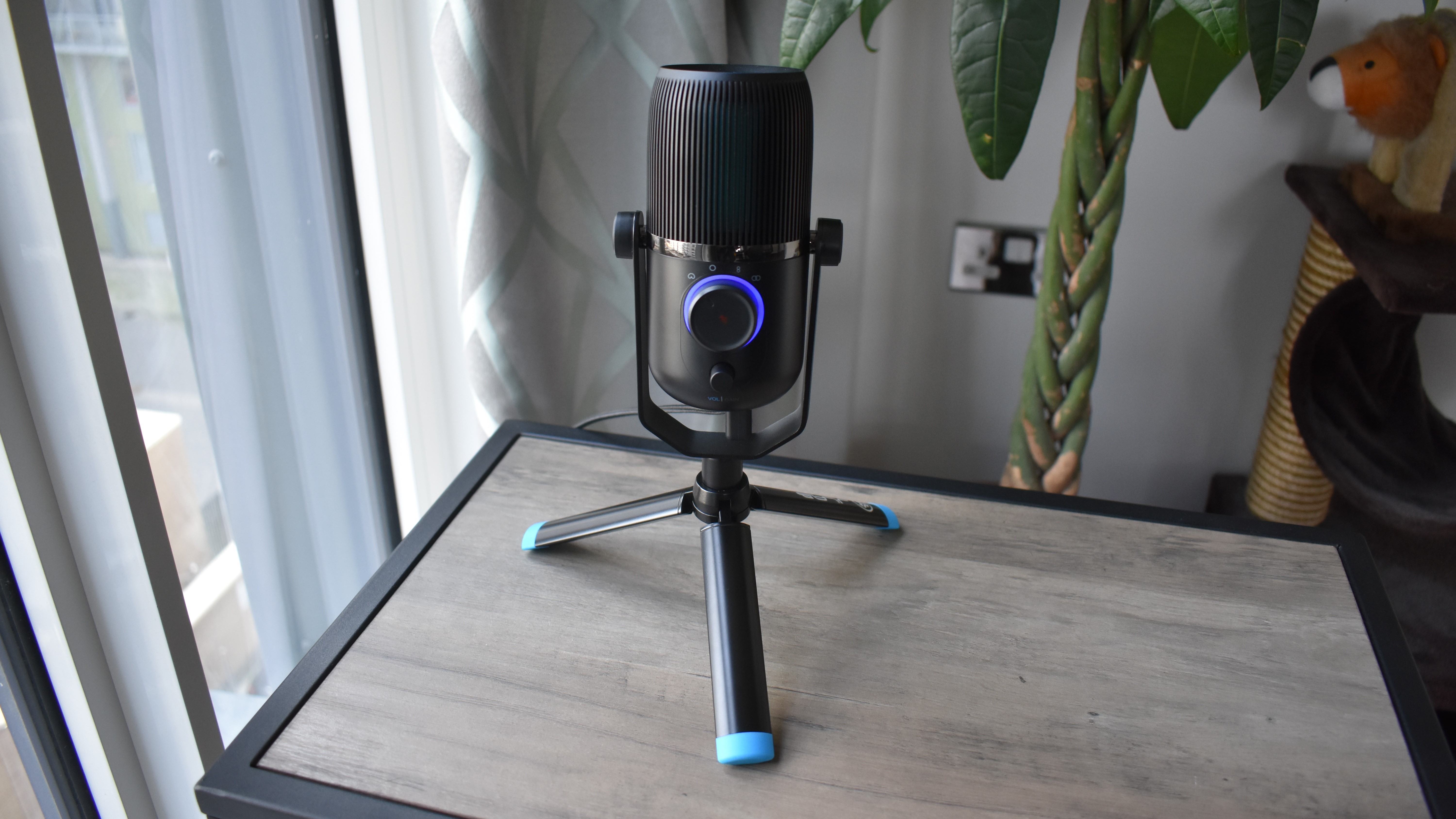

Specifications
Reasons to buy
Reasons to avoid
✅ Excellent price. The Jlab Talk won't break the bank, coming in significantly lower than $100.
✅ Great sound. It wouldn't be here if it didn't sound any good, and sound good it does.
✅ Simple setup. It's easy to use, and plugs in with a single cable.
❌ Background noise can be an issue. The microphone often picks up noises in the background of recordings.
❌ Build leaves something to be desired. There are unsightly mold lines and the plastic feels cheap.
The JLab talk is special to me because it manages some great performance at a bargain price, making home recording a whole lot more accessible to wider range of people and budgets. It helps that it’s a very solid recording device as well, with clarity and depth to it’s audio output.
You can pick one up for just $99, which brings in square into view of the Blue Yeti Nano — although it makes a more compelling request for your hard earned dollars. The feature set of the Talk puts it in line with more expensive options, with four switchable modes and a solid USB connection.
The same four modes are available as you’ll find on the Blue Yeti, including bidirectional, omnidirectional, cardioid, and stereo. While the some of the modes aren’t as crisp as you’ll find on more expensive models (Our testing revealed that the bidirectional mode wasn’t as consistent as omnidirectional mode, for example), stereo and cardioid are both excellent at capturing sound.
The fact that all this is available for such a low price is seriously impressive, and even if you’ve got more to spend on something more expensive, the Talk should be on your shortlist so that you can go and spend more on a pop filter or stand. Or more guests for your podcasts.
- Read our full JLab Talk review
Best microphone for podcasters

Specifications
Reasons to buy
Reasons to avoid
✅ Excellent audio. The Shure MV7+ sounds incredible thanks to its hybrid design.
✅ Very flexible. There are loads of options to help you get the most out of your mic.
✅ Good supporting software. Shure's app works very well, and lets you customize your mic.
❌ Expensive. It's one of the most expensive mics on the list, costing over $200.
❌ Not for beginners. The mics dizzying options might be too much for someone new to microphones and audio recording.
If you’re a podcaster, streamer, or musician, looking to up your game or hone your craft, the Shure MV7+ microphone could be a worthwhile investment. The omnidirectional (cardioid) mic is great at picking up one voice at a time, and the built-in denoiser and digital popper stopper features rival professional mics I’ve used. Best of all, there’s an LED color-changing touch panel for instant muting and unmuting, meaning you can control output with a finger tap.
As it records with 32-bit 48kHZ audio quality, voices are deep, layered, and nuanced, just as they are in real life. And with the Shure Motiv Mix app, you can add reverb, change vocal tones, and customize your output to suit any of your needs. The high-quality audio recording means this is a great choice for podcasters, radio presenters, streamers, and musicians.
However, it is more expensive than the Blue Yeti, which may be a downside should you be on a budget. But, all in all, I found this to be a wonderful mic with high-quality recording and great features.
- Read our full Shure MV7+ review
Best for beginners
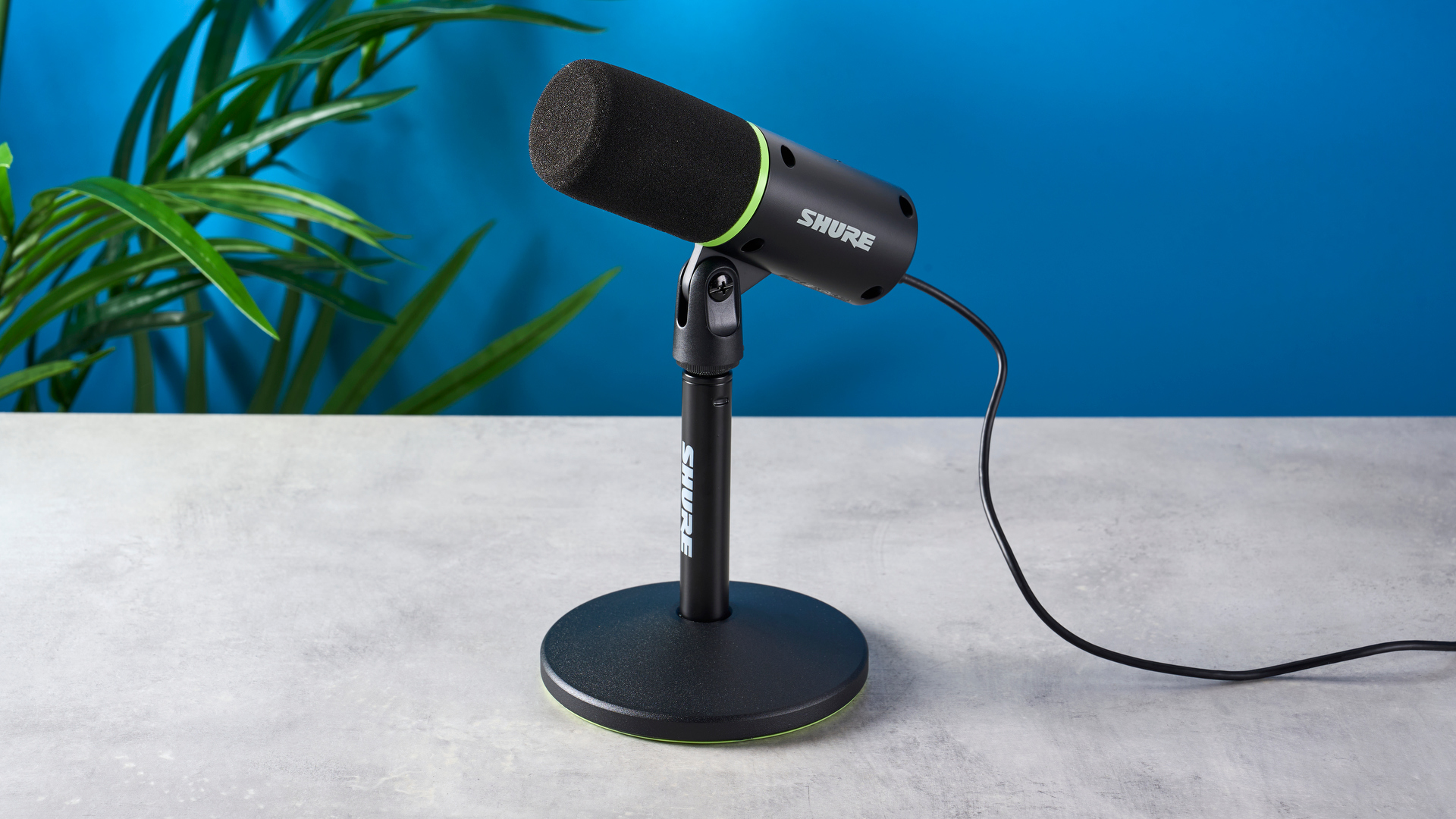
Specifications
Reasons to buy
Reasons to avoid
✅ Everything you need in one box. If you're looking to get started with audio recording, you get a stand, mic, and interface in the box.
✅ Great sound quality. The Shure MV6 sounds better than anything else in its price bracket.
✅ Easy to use. Thanks to its plug-and-play nature, it's super easy to get up and running.
❌ Expensive. While more affordable than some entries, it's still more expensive than other beginner mics.
❌ Non adjustable stand. While the stand in the box is useful, it's also not adjustable.
As most Shure mics lean towards professional use, they can be pretty daunting for beginners. Enter the MV6, Shure’s microphone designed specifically for complete newbies. The MV6 is super easy to use: you literally just plug the USB-C cable into the back of the mic and your laptop, and you’re good to go.
Unlike other entry-level mics we’ve seen, though, the MV6 comes with a range of live edit settings, like vocal tones. On top of that, with Shure’s Motiv Mix app, you’re granted access to Shure’s range of proprietary audio software like real-time Denoiser and Digital Popper Stopper. In testing, these two settings particularly impressed us, and managed to completely eradicate a ‘cafe white noise’ we were playing in the background while recording.
If you’re on a super tight budget, though, this mic might not be entry-level enough for you. At $149, it’s much cheaper than alternative Shure mics, but it’s still around $50 pricier than the cheapest USB mics, like the Blue Yeti Nano, and the JLab Talk Go. But, you do get the rich, creamy, luxurious audio quality you’d expect from such a prestigious brand.
For new content creators, or those who simply don’t feel confident with high-tech mics yet, the Shure MV6 is an incredible microphone that does everything you’d want it to, and more.
- Read our full Shure MV6 review
Best for gamers
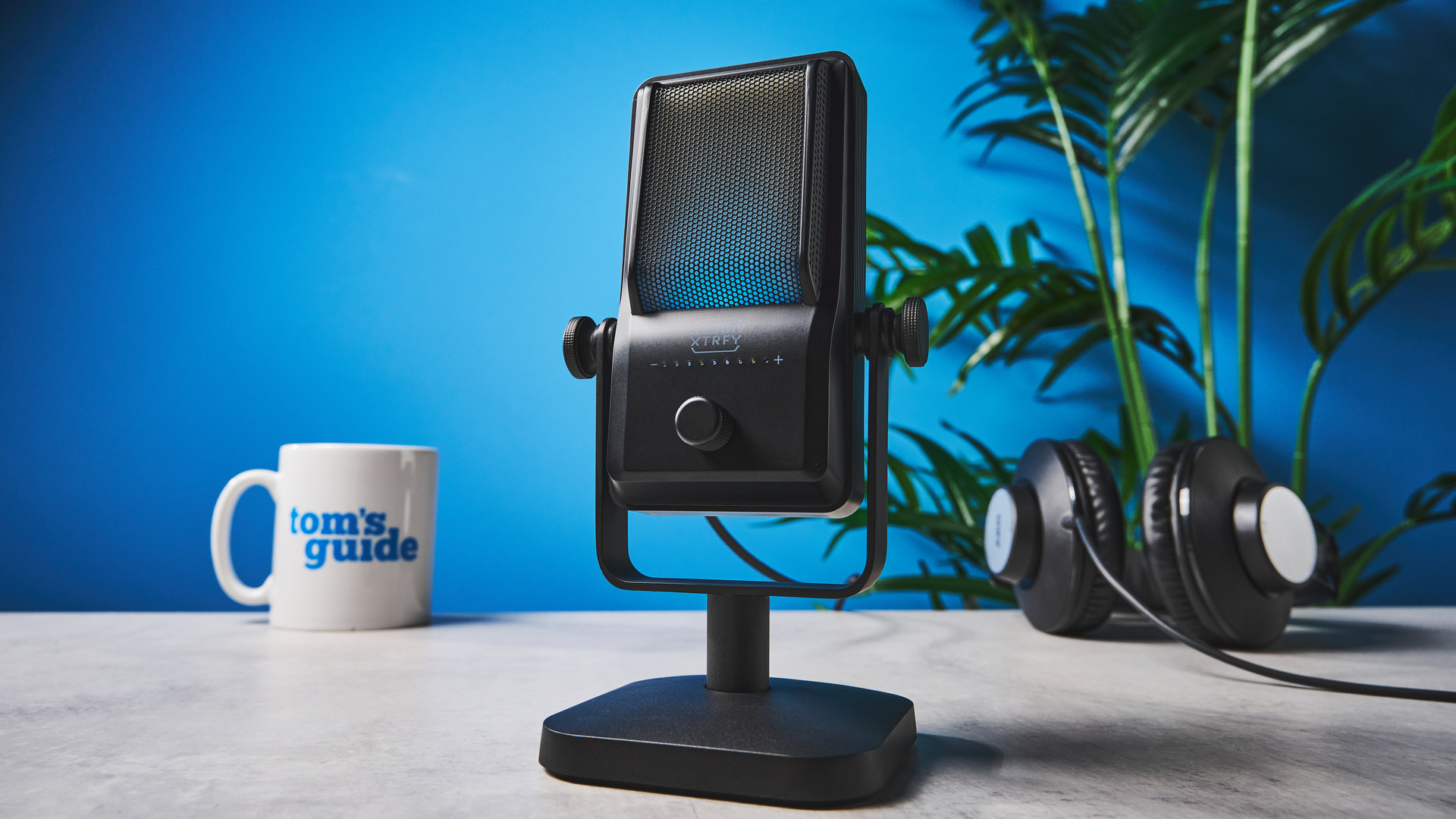
Specifications
Reasons to buy
Reasons to avoid
✅ Great looks. Like a retro mic from the 20s, only with a healthy serving of LED RGB lights.
✅ Solid audio quality. Recordings from the mic sound great, with plenty of detail.
✅ Well priced. You can often find the mic for under $100.
❌ Non-adjustable stand. Hopefully, you like how the stand sits out of the box — it's immovable.
❌ No app. What you see is what you get — there's no way to customize the mic in an app.
The Cherry XTRFY Ngale R has the looks and the talent to pull it off. With dynamic, warm vocal clarity, the Ngale R is ideal for content creators who want to get fantastic sound for under $100. The retro-inspired aesthetic of the cardioid mic will look great in a gaming stream and the low-cut filter built into the mic will minimize your gaming ambient sound.
In particular, the Ngale R’s full-range vocal mode is divine, capturing the essence of a multi-dimensional voice with clarity akin to that of a much pricier microphone. While full-range mode picks up more ambient noise than the low-cut filter does, the vocal depth makes up for it, making it the perfect mode for podcasters and single-person voiceovers.
This mic has incredible value — I couldn’t believe it when I saw the price tag of a mere $96. There’s no way you would be able to tell that this wasn’t a much pricier mic if you’re just using it for regular content creation. As it comes with no muff or pop stopper, you might want to get separate ones if you’re prone to plosive pops and fricative hisses. But overall, for $96, this vintage-looking streaming and content creation mic is a great buy.
- Read our full Cherry Ngale R review
Best Shure alternative
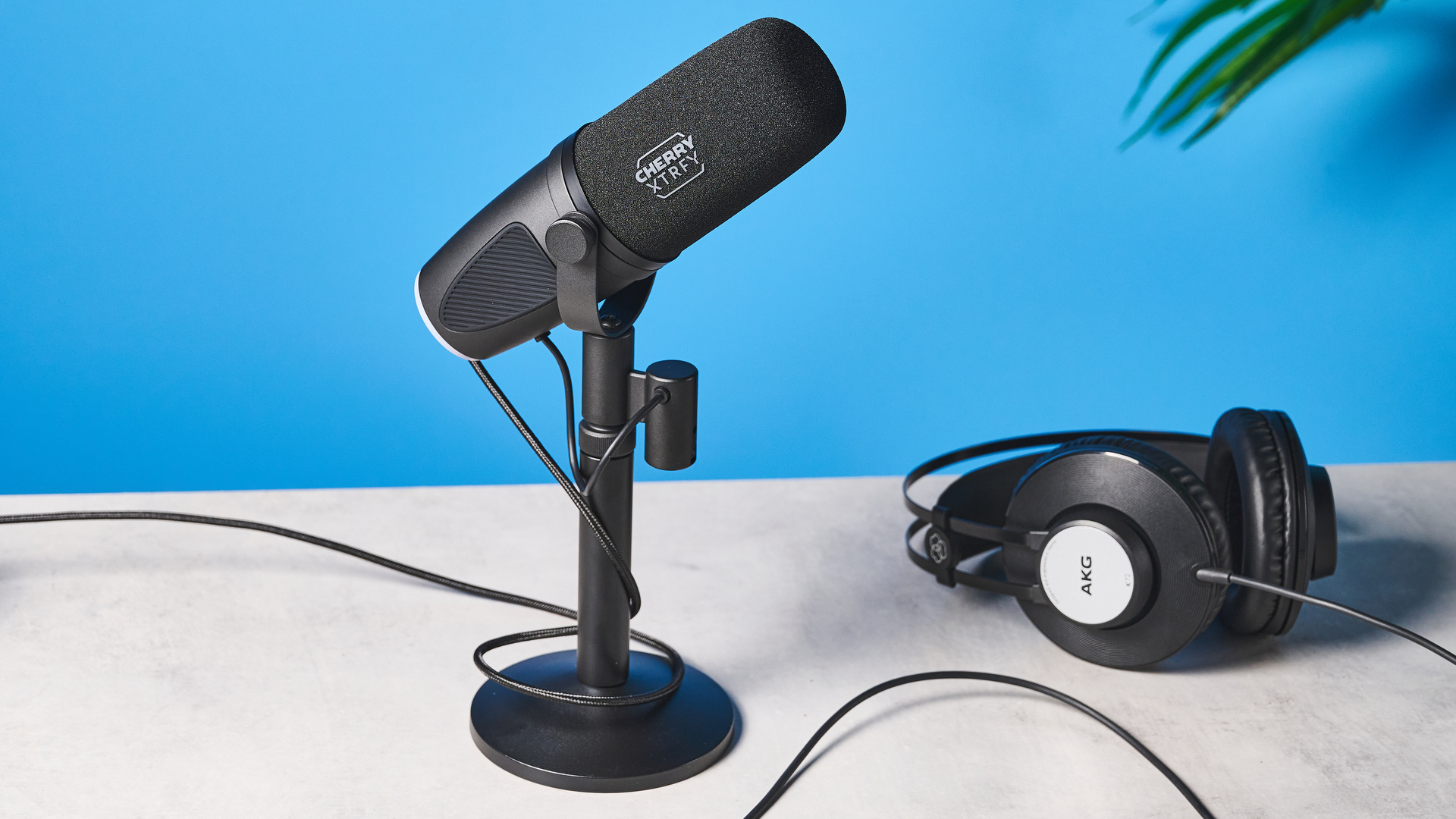
Specifications
Reasons to buy
Reasons to avoid
✅ Great sound. The Ngale X is capable of some top-notch recording quality.
✅ Included stand. There's a sturdy desktop stand in the box so you don't have to buy one separately.
✅ Flexible connections. The USB can go straight into a computer, and the XLR can plug into an interface or other recording equipment.
❌ No app. There's no way to customize the app straight from Cherry.
❌ Can get noisy. In some modes, the mic pics up more noise than you might like.
If you’re a gaming streamer, a podcaster, or just starting out on your content creation journey, the Cherry XTRFY Ngale X microphone is a great choice for only $149. I tested this out in my bedroom, with no soundproofing, street noise, and an amateur setup, and it sounded super professional. I couldn’t tell at all that I wasn’t recording in a soundproofed booth. The RGB LED panel on the back of the mic would look great in a gaming stream or visual podcast, too.
The XLR and USB-C connection types mean this mic will suit professional broadcasters plugged into mixing desks, or more casual creators recording straight into laptops. Upon plugging into a laptop, the USB-C connection means you can record straight away, perfect for content creators just starting out.
However, the Ngale X doesn’t come with companion software, so any vocal tone or audio effects you might want to apply, you’ll have to do in third-party software like Adobe or Audition. In general, though, this is a great mic for any kind of content creator and especially excels at retaining the nuance and animation in natural speaking voices.
- Read our full Cherry Ngale X review
Specs compared
| Header Cell - Column 0 | Mic type | Audio patterns | Connection type |
|---|---|---|---|
Shure MV7i | Dynamic | Cardioid | XLR, USB-C, ¼” TRS |
JLab Talk | Condenser | Bidirectional, Cardioid, Omnidirectional, Stereo | USB |
Shure MV7+ | Condenser | Cardioid | USB C, XLR |
Shure MV6 | Condenser | Cardioid | USB C |
Cherry Ngale R | Condenser | Cardioid | USB-C-to-USB |
Cherry Ngale X | Condenser | Cardioid | USB-C, XLR |
Also tested
This is essentially a more affordable take on the Blue Yeti formula, albeit with a taller profile than the Blue Yeti Nano. =Although the UM700’s more famous rival edges it on general recording prowess, it’s more than up to the task for gaming, meetings and casual chats. Simply connect the USB cable, up the gain a little, and the UM700 is good to go. Read our full Movo UM700 review
If you've got an RGB-heavy gaming PC and want a microphone to match, the more colorful QuadCast S is worth a look. The detail-rich recording quality is safeguarded by a built-in pop filter and shock mount, and it can easily be attached to your own stand if you'd prefer. Like the Blue Yeti and JLab Talk, is also provides four distinct recording modes, so you can tailor the settings for solo or group recording. Read our full HyperX QuadCast S review
This competent mic produces compelling recordings with decent audio. We appreciate the aux jack to connect headphones and hear your voice, along with the USB-C port that makes connecting to a desktop or laptop much simpler. The Rode NT-USB does have a gain issue, and adjusting it inside software won’t do much, but it can still be a serviceable product for newbie podcasters and streamers. Read our full Rode NT-USB Mini review
Things to consider when choosing a microphone
Setup: The best microphone depends almost entirely on your setup. This list gives a brief overview of all-purpose mics, podcasting mics, music mics and so forth. Basically, determine what you most need a microphone for, then find the appropriate one for your needs. As with most other gadgets, cheaper microphones tend to be more generalized, whereas more expensive ones tend to be more specialized. This doesn’t mean that cheaper microphones are inherently worse. But if you want semi-professional quality, you’ll have to pay semi-professional prices.
Research: Visit manufacturer websites, and learn about what each mic does best. The official website will usually give you a good idea as to whether the mic excels in podcasting, gaming, music or some other application. Failing that, remember that cardioid is generally the most useful audio pattern if you’re going to be recording by yourself in a home environment. Other patterns are good to have, but they’re useful only when you bring in more people or sound sources.
Pricing considerations: Obviously, price is a big consideration when looking for the best microphones. Although there are always exceptions, big-name brands will typically command a bit extra, but generally speaking, the less you spend on a microphone the greater the chance that performance and features will be compromised. Going for a budget option isn't always the best choice, as any money you save on your purchase won't do you much good if the sound quality is poor.
As the saying goes: timing is everything; and right now many of our favorite models are being discounted at online retailers, meaning you can bag a bargain for even less. Remember to bookmark our best tech deals page for all the latest savings.
What do the different audio patterns mean?
Microphone audio patterns explained
Some of the mics on this list offer different options for audio patterns: Bidirectional, cardioid, omnidirectional and stereo. Others offer only cardioid. Here's a brief explanation of each pattern, to help you decide which one to use:
Cardioid: This pattern picks up audio coming from one direction. This is ideal for a single source speaking directly into the mic, like in meetings or recording voiceovers.
Bidirectional: The pattern picks up audio coming from two directions only. This is ideal for two speakers sitting directly across from one another.
Omnidirectional: This pattern picks up audio from all around the mic. This is ideal for a whole group of people surrounding the microphone.
Stereo: This pattern picks up audio in front of the mic, as well as off to the sides. This is ideal for a musical group, or a panel of speakers facing the same direction.
More from Tom's Guide
Sign up to get the BEST of Tom's Guide direct to your inbox.
Get instant access to breaking news, the hottest reviews, great deals and helpful tips.

Tammy and her generous collection of headphones have found a new home — Tom's Guide! After a two-and-a-half-year stint as iMore's resident audiophile, Tammy's reviews and buying guide expertise have more focus than ever on Tom's Guide, helping buyers find the audio gear that works best for them. Tammy has worked with some of the most desirable audio brands on the planet in her time writing about headphones, speakers, and more, bringing a consumer focussed approach to critique and buying advice. Away from her desk, you'll probably find her in the countryside writing (extremely bad) poetry, or putting her screenwriting Masters to good use creating screenplays that'll never see the light of day.
